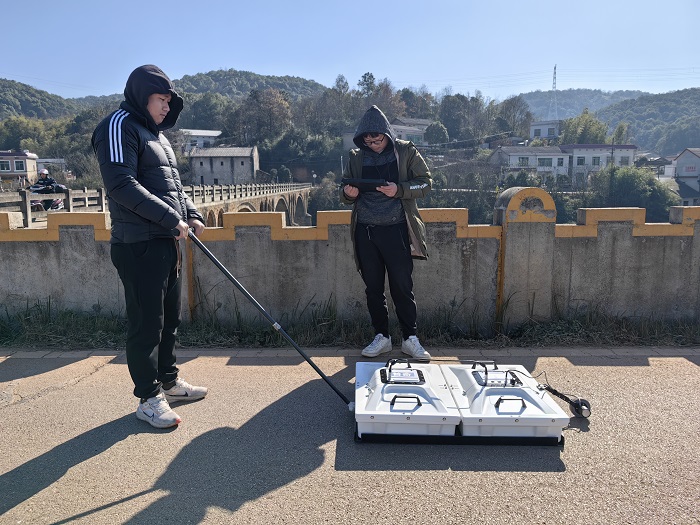1、Basic principle of ground penetrating radar

ground penetrating radar is a kind of geophysical method of using high frequency electromagnetic wave for underground target detection. Its basic principle is to transmit high-frequency pulsed electromagnetic waves to the ground through the antenna, and then receive the signals reflected back after these electromagnetic waves propagate in the underground medium. By analyzing these reflected signals, information on the structure, distribution and characteristics of the underground medium can be obtained.
The ground penetrating radar system mainly consists of a transmitter, a transmitting antenna, a receiver, a receiving antenna and a data processing unit. In the detection process, the transmitter generates high-frequency pulse signals and transmits them to the underground through the transmitting antenna. When the electromagnetic wave encounters the interface of different media in the ground, the phenomena of reflection, refraction and attenuation will occur. The reflected electromagnetic wave is received by the receiving antenna and transmitted to the data processing unit for signal processing and analysis.
2, radar wave propagation characteristics
Radar wave propagation characteristics in the underground medium has an important impact on the detection effect of ground penetrating radar. Radar wave frequency is high, short wavelength, with incident, reflection, refraction and attenuation and other propagation characteristics. In the underground medium, radar wave propagation speed, attenuation and reflection strength will be affected by the nature of the medium. For example, the electrical conductivity, dielectric constant and magnetic permeability of the medium and other parameters will affect the propagation characteristics of radar waves.
In addition, the propagation of radar waves in the underground medium is also affected by a variety of factors, such as the layered structure of the underground medium, cracks, cavities and so on. These factors will lead to radar wave scattering, bypassing and Yuan reduction and other phenomena, thus affecting the accuracy and reliability of the detection results.
3、Underground target detection technology
Ground penetrating radar has a wide range of applications in underground target detection. By analyzing the reflected radar signals, different targets in the underground medium can be identified, such as pipelines, cavities, cracks and so on. In addition, ground penetrating radar can be used for localization, identification and evaluation of underground structures.
In order to achieve efficient and accurate detection, ground penetrating radar employs a variety of technical means. For example, by changing the polarization of the transmitting antenna and the configuration of the receiving antenna, the detection sensitivity and resolution of different target bodies can be improved. In addition, the received signals can be processed and analyzed by methods such as signal processing technology and imaging technology to obtain more accurate and detailed information.
4、Application examples in engineering field
Ground penetrating radar has a wide range of applications in the engineering field. For example, in the fields of municipal facilities, highways and airports, construction projects and railroad tunnels, ground penetrating radar can be used to detect hidden dangers such as underground pipelines, voids and cracks, providing important reference information for engineering design and construction. In addition, in the field of archaeology, ground penetrating radar can be used to detect underground sites and artifacts, providing important support for archaeological research.
Taking municipal facilities as an example, ground penetrating radar can non-invasively detect the direction, burial depth and damage of underground pipelines. By comparing and analyzing the intensity and distribution characteristics of the reflected signals, the location and condition of the pipelines can be determined, and potential safety hazards can be found and solved in time.
5、Environmental detection application practice
In addition to the engineering field, ground penetrating radar also has a wide range of applications in environmental detection. For example, in environmental monitoring and geologic disaster early warning, ground penetrating radar can be used to detect groundwater level, soil moisture and geological structure and other information, providing important data support for environmental protection and disaster prevention.
In addition, ground penetrating radar can also be used for non-destructive scanning of trees and root distribution detection. Through the radar scanning of trees, the internal health of trees and the distribution of the root system can be obtained, providing a scientific basis for tree protection and urban greening.








